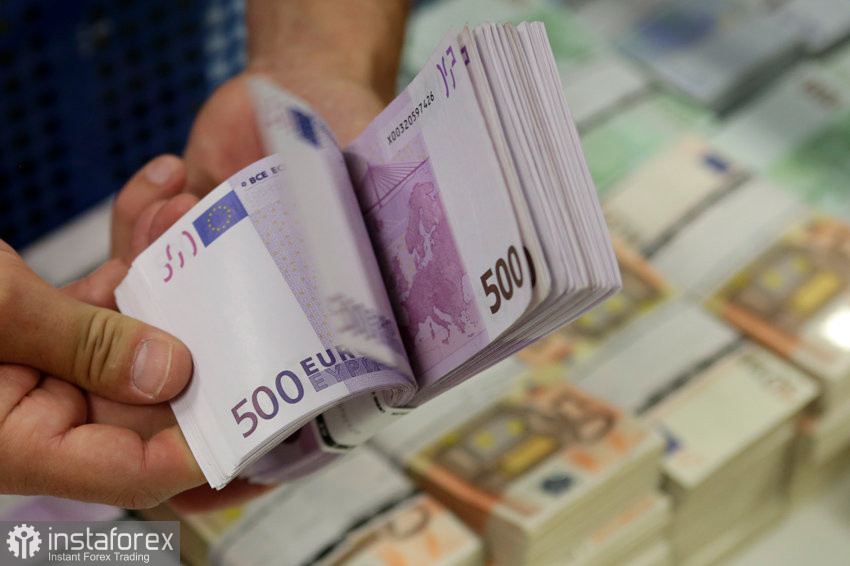The euro continues sluggish attempts to grow after the European Commission raised its inflation forecast for the eurozone and warned of the problems awaiting the region in the future. The Commission also recognized the resilience of the region's economy.
According to recent data, EU officials have raised their forecasts for consumer price growth in the eurozone to 5.8% this year and 2.8% in 2024, from 5.6% and 2.5% respectively. Economic growth forecasts were also revised upwards. The fact that core inflation remains stable has forced the European Commission to revise its expectations. The so-called core inflation, which excludes volatile categories, has been revised upwards by three-quarters of a percentage point. According to Brussels representatives, this will lead to an increase in the price index both this and next year.

"Core inflation is expected to slow more gradually, as pressures from past cost shocks wane and financing conditions tighten," the Commission stated. Meanwhile, the European Commission expects persistently high price pressure on services combined with slowly decreasing pressure on food and goods to keep core inflation high. The EU's forecast for price growth this year is now half a percentage point higher than the ECB's forecast published in March. As for next year, it's only 0.1% lower.
As for economic growth in the eurozone, it will be higher than expected. The European Commission has also updated the GDP estimate for 2023 and 2024. "Thanks to declining energy prices, an extremely resilient labor market, and easing supply constraints, we have avoided a winter recession and are set for moderate growth," EU Economic Commissioner Paolo Gentiloni stated in his announcement.
The region's gross domestic product is expected to grow by 1.1% this year and 1.6% in 2024 - both results are slightly higher than previous estimates. It's also worth noting that no recession is expected for eurozone countries. According to the forecast, only Estonia will experience a year-on-year decline in the eurozone in 2023, with GDP falling by 0.4%.
Gentiloni warned that improving growth prospects should not be a cause for complacency. "The risks are still too great to feel comfortable, and Russia's military special operation in Ukraine continues to overshadow prospects," he said.
As recent data showed, the eurozone grew by just 0.1% in the first quarter of this year, which helps to explain why industrial production volume in the eurozone fell by 4.1% in March compared to the previous month. This is the largest decline since April 2020, when factories and plants closed due to the pandemic.
As for the technical picture of EURUSD, the bear market has not come to a halt yet. In order for the bulls to return, the price needs to reach 1.0880 or at least stay above 1.0850. This can push the pair to 1.0910. Afterwards, it is possible to climb up to 1.0940, but this will be difficult to reach without good fundamental data from the eurozone. In case it falls around 1.0850, I expect some action from the big buyers. If there is no activity, it would be nice to wait for the update of the low at 1.0800 or to open long positions from 1.0770.
As for the technical picture of GBPUSD, the bulls will try to compensate for some of the losses. To bring back growth, it is necessary to take over 1.2475. Surpassing this level will strengthen the hope for further recovery to the area of 1.2500, after which it will be possible to speak about a sharper upward movement of the pound, to the area of 1.2540. In case the pair falls, the bears will try to take control of 1.2450. If they succeed, a breakout of this range will strike a blow to the bulls' positions and will push GBPUSD to the low of 1.2390 with the prospect of an exit at 1.2350.





















